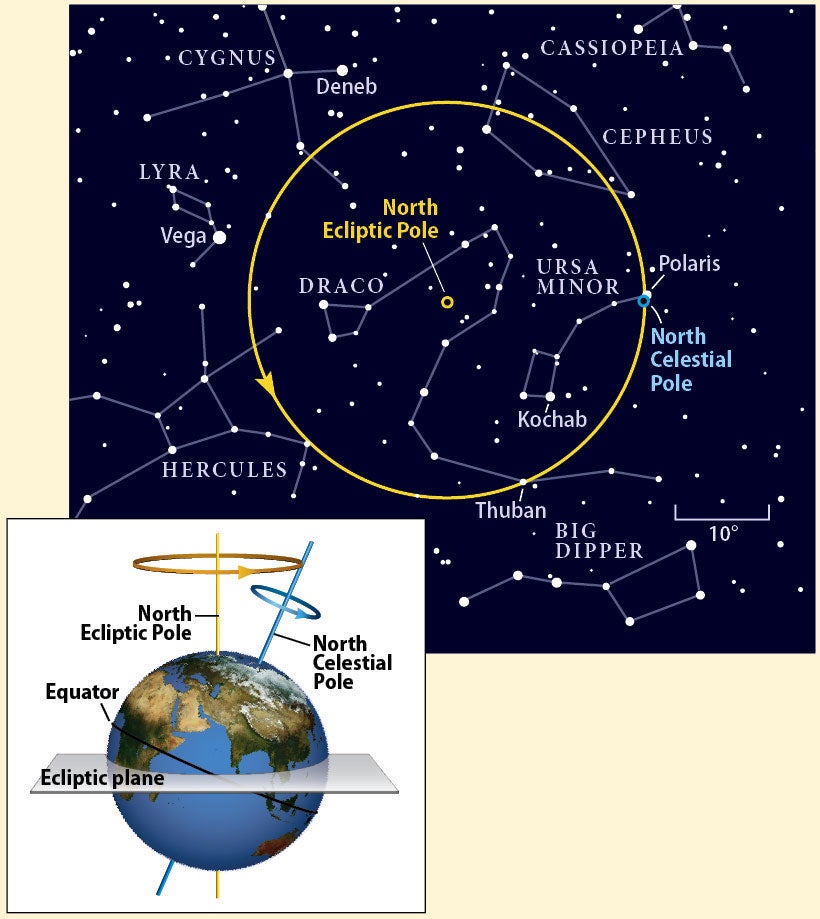
As Earth orbits the Sun, it also spins about its axis in just less than 24 hours. Our planet exhibits other motions as well — the most dramatic of them is known as precession. You can see precession every time you spin a top. As the top begins to slow, it also starts to wobble on its axis. A gyroscope does exactly the same thing, and so does Earth. As a result, a line extending from Earth’s North Pole slowly traces a large circle around the sky. It takes about 26,000 years to complete one precessional cycle.
In 1000 B.C., ancient mariners such as the Phoenicians had no convenient pole star to use for navigation. In the 5,000 to 6,000 years of recorded human history, Polaris (Alpha [α] Ursae Minoris) is a relative newcomer to the job of pole marker.
The sides of the great pyramids of Egypt align with the four cardinal directions. In the 19th century, explorers discovered a small shaft in the largest pyramid that pointed to the North Celestial Pole. Four thousand years ago, Egyptian astronomers were using the star Thuban (Alpha Draconis) as their pole star. As the centuries crept by, Thuban appeared to drift away from the North Celestial Pole. Although it was never as close to the Celestial Pole as Thuban, Kochab (Beta [β] Ursae Minoris) served as the North Star around 2000 B.C. At the height of the Roman Empire, there was no conspicuous North Star. Ancient travelers and seafarers had to use other methods to determine the direction north.
About 1,000 years ago, people began using Polaris as a standard for navigation. Alas, Polaris too will slip away from the Celestial Pole. In 14,000 years, the brilliant star Vega (Alpha Lyrae) will replace it. Vega is much brighter than Polaris, but it will never come as close to the Celestial Pole as the current North Star. At its best, Vega will be almost 10 Moon diameters away from that specific spot in the Northern Hemisphere. — Raymond Shubinski, Contributing Editor









